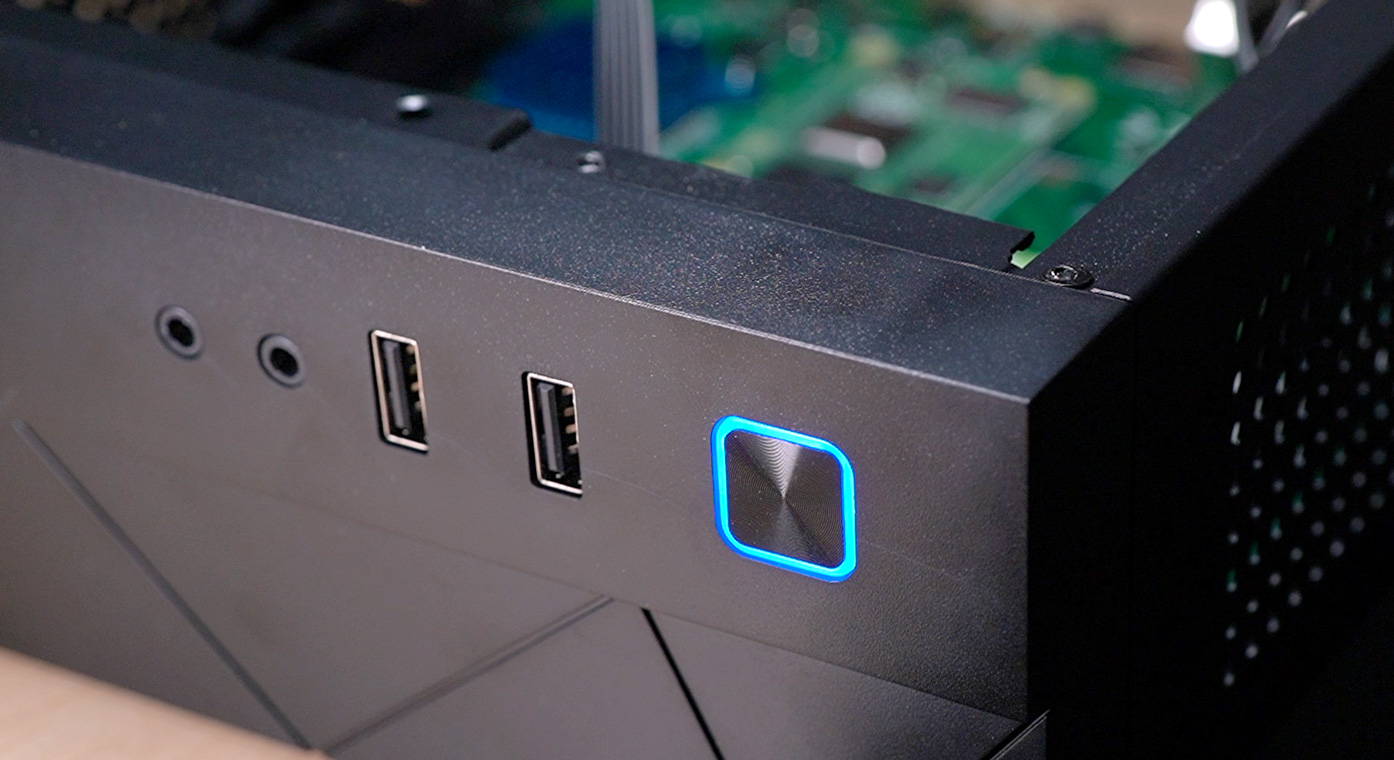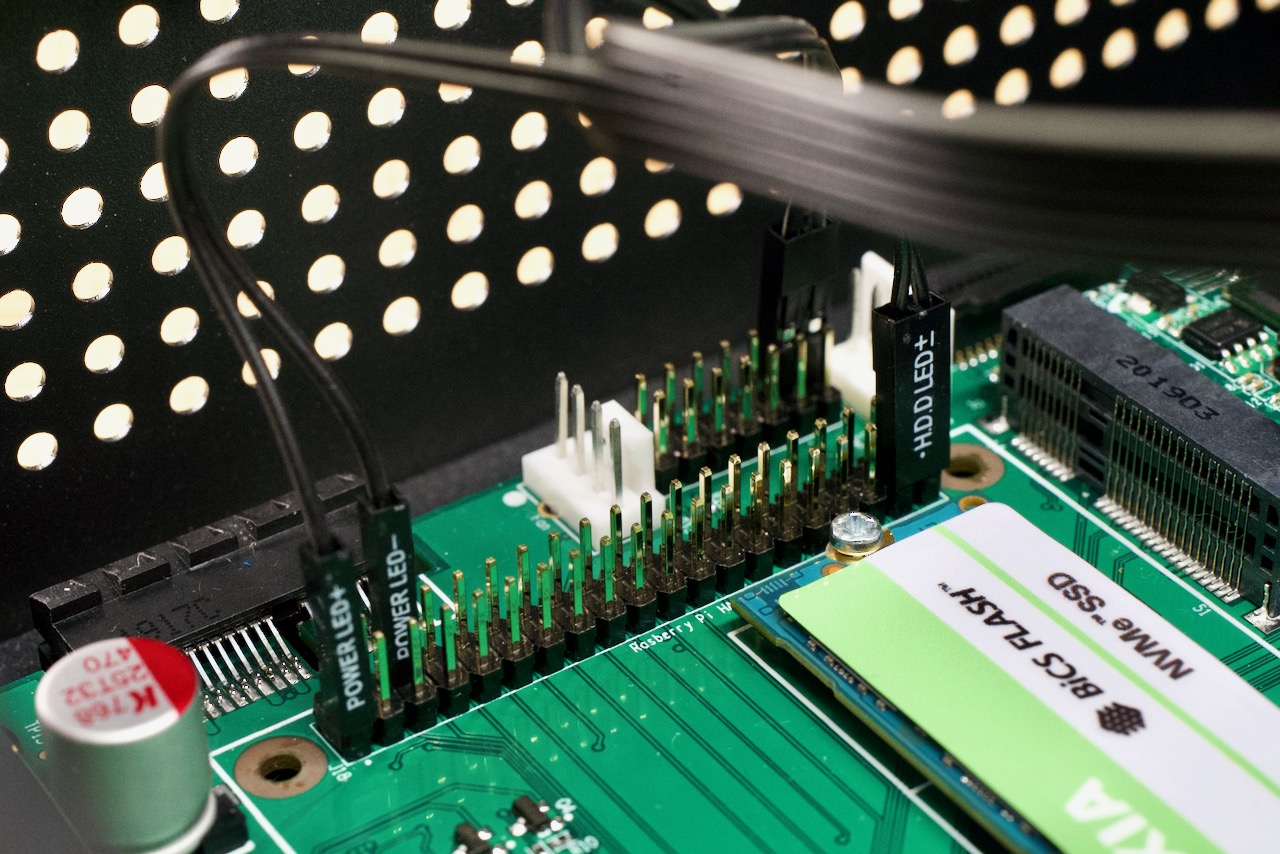Using Compute Module 4 IO Board pins as an ATX case front panel header
Recently I built the Seaberry, a Raspberry Pi Compute Module 4 mini ITX motherboard into a PC case (video coming soon...), and got the case power button, power LED, and activity LED all wired up to the Pi:

I used the GPIO and 14-pin header present on the Seaberry (which conveniently are identical to the headers on the official CM4 IO Board), and wound up with a fully functionality power button, power LED, and activity LED!
Here's how I did it:

Power button
To get the power button working, you need to connect the case's front panel 'power switch' connector to pins 12 and 14 (GLOBAL_EN and GND), as seen in the top middle of the above picture.